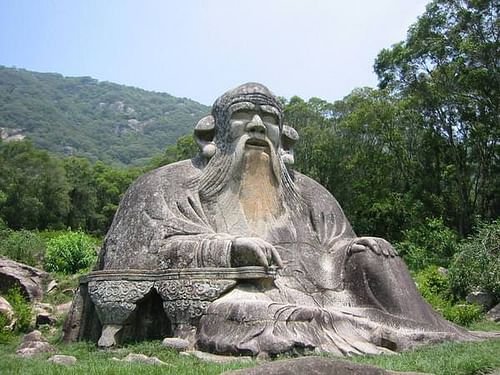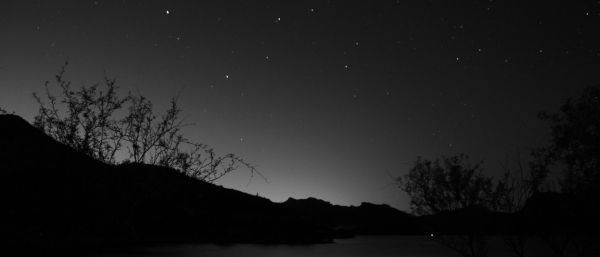What are Yin and Yang?
The original meaning of the terms yīn (陰) and yáng (陽) is not known exactly. The traditional Chinese character, modernly transcribed as yīn (frequently translated as 'dark, gloomy'), represents the northern, cloudy part of a mountain, while the simplified character (阴) appears as the character for 'moon' (月,yuè).
The philosopher Wing-Tsit Chan associates with such terms the natural phenomena of the cloudiness that covers the sun and its brightness. Furthermore, the term yīn is related to cold weather, what is covered and what is interior; and yang suggests the ideas of sunshine and heat. These concepts surely have their origins in ancient agrarian religions.
The representation of pairs of complementary antagonistic forces has been recognized since the bronze age in ancient China, corresponding to the archaeological finds of the Shang dynasty. Basic "dualism" was the first outline of Chinese philosophy whose antiquity is indicated by its inclusion in the ancient I Ching, whose oldest texts date back to the second millennium BC and which bases many of its aphorisms on the basis of the opposition of antagonistic concepts: strength-weakness, high-low, rigidity-flexibility,…

Yin-yang philosophical principle
Yin and yang is a philosophical and religious principle that explains the existence of two opposite but complementary forces that are essential in the universe. Yin is associated with the feminine, darkness, passivity and the earth; and yang is linked to the masculine, the light, the active and the sky.
According to this philosophy, both energies are necessary to maintain universal balance. This concept comes from the Yin Yang school, one of the so-called "100 schools of thought", a series of philosophical and spiritual currents that emerged in China between 770 and 221 BC.
Later, Taoism, a philosophical and religious doctrine also of Chinese origin that emerged during the same period, absorbed the principles of the Yin-Yang school to propose that everything that exists has a counterpart that is necessary for existence. In Taoism, yin and yang represent principles found in the universe, which are not opposites but rather complement each other. In their interaction, they create everything that exists. Their relationship is recognized through the symbol of taijitu, popularly known as the "yin-yang."

What is Yin?
Yin is an element that, together with yang, represents a principle of order of the universe and all existing things. Its translation from Mandarin means 'negative force' and is associated with darkness. In this sense, yin is the receptive and passive energy of the universe, understood as the north face of a mountain, hidden in the shadows.
Thus, yin as a negative energy is not understood as something "bad", but rather as something complementary to clarity. Like a shadow that is projected on an object exposed to a ray of light. It is considered an ordering principle of the cosmos or a symbol that represents an energy of certain attributes of things.
Both elements (yin and yang) are expressions used to understand the reality of the human being, that is, ways of observing the social and natural world. In turn, the different cycles and periods of the year are represented by some of these elements. Yin represents the season that covers autumn and winter, characterized by being darker and colder. During these seasons there is less work and outdoor activities.
Furthermore, the meaning of yin has historically been associated with the feminine, since women were assigned to work within the house, caring for and feeding the family, and not work activities in the field (which were considered more active and typical of men).
Characteristics of yin
- Female.
- Serenity.
- Seasons: autumn and winter.
- Cold.
- Night.
- Dark.
- North.
- Soft.
- Contraction movement.
- Element of water.
- Passive.
What is Yang?
Yang is positive energy, clarity and light, understood as creator and generator. This represents the illuminated south side of a mountain, light, fire, the masculine, the active, the hardness and the warm times are attributes of yang. It translates from Mandarin as 'positive force'.
As a complement, yang represents the opposite of yin, but not in a sense of opposition, but rather as two sides of the same coin. Yang represents the time of spring and summer. During warm times and with more light, as happens during these seasons, work in the field was (and actually is) a common activity.

Thus, as a result of the observation of the social and natural world, yang was inscribed in daily tasks carried out outdoors, detaching from this the idea of movement or action. These tasks have historically been associated with men, who brought food from outside the house.
Characteristics of yang
- It is masculine.
- It is the fortress.
- Their seasons: spring and summer.
- It is warm.
- Your time is the day.
- It is clear.
- It is associated with the south.
- It is hard.
- Your movement is the expansion.
- It manifests itself in the fire.
- Is active.
Both yin and yang need each other and their coexistence allows the universe to exist. Their relationship is that of a continuous movement of action-reaction. Neither of the two has more value or superiority than the other, since they are integral and necessary parts of human, social and natural reality.



